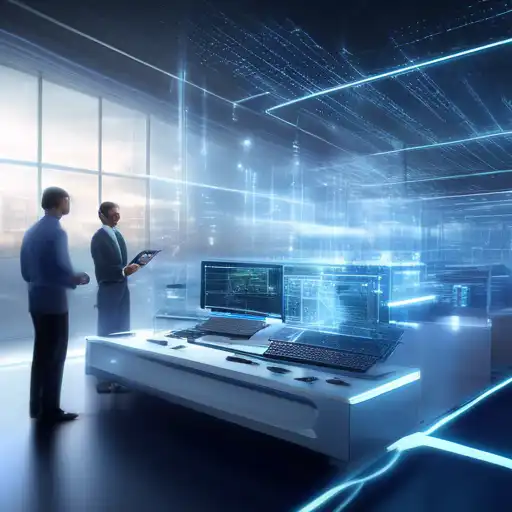Introduction to Edge Computing
In the digital age, speed and efficiency are paramount. Edge computing emerges as a transformative technology that processes data closer to the source, significantly reducing latency and bandwidth use. This article delves into how edge computing is reshaping industries by enabling faster data processing and real-time analytics.
What is Edge Computing?
Edge computing refers to the practice of processing data near the edge of your network, where the data is being generated, instead of in a centralized data-processing warehouse. This approach minimizes the distance data must travel, thereby speeding up processing times and improving response times for end-users.
Benefits of Edge Computing
The advantages of edge computing are vast and varied, including:
- Reduced Latency: By processing data closer to its source, edge computing drastically cuts down on delay, enabling real-time applications.
- Bandwidth Savings: Transmitting large amounts of raw data over networks can be costly and inefficient. Edge computing reduces the need for such transmissions.
- Enhanced Security: Processing data locally can limit the exposure of sensitive information, offering an additional layer of security.
- Scalability: Edge computing allows for more scalable solutions, as it decentralizes processing power.
Edge Computing vs. Cloud Computing
While both edge and cloud computing play pivotal roles in the modern IT landscape, they serve different purposes. Cloud computing centralizes data processing in remote data centers, whereas edge computing decentralizes processing to be closer to data sources. This distinction is crucial for applications requiring immediate data analysis, such as autonomous vehicles or industrial IoT devices.
Real-World Applications of Edge Computing
Edge computing is revolutionizing various sectors by enabling faster and more efficient data processing. Some notable applications include:
- Healthcare: Wearable devices monitor patients in real-time, processing health data on the spot for immediate feedback.
- Manufacturing: Sensors on the factory floor predict equipment failures before they occur, minimizing downtime.
- Retail: Smart shelves track inventory levels in real-time, optimizing stock management.
- Smart Cities: Traffic lights adjust in real-time based on current traffic conditions, reducing congestion.
Challenges and Considerations
Despite its benefits, edge computing presents challenges such as the need for robust security measures at each edge location and the management of a more distributed IT infrastructure. Organizations must weigh these factors when integrating edge computing into their operations.
The Future of Edge Computing
As the Internet of Things (IoT) continues to expand, the demand for edge computing is expected to grow exponentially. With advancements in 5G technology, edge computing will become even more integral to delivering high-speed, low-latency services across industries.
Edge computing represents a significant shift in how data is processed and analyzed. By bringing computation closer to the data source, it offers unparalleled speed and efficiency, paving the way for innovative applications and services. As technology evolves, edge computing will undoubtedly play a central role in shaping the future of digital transformation.
